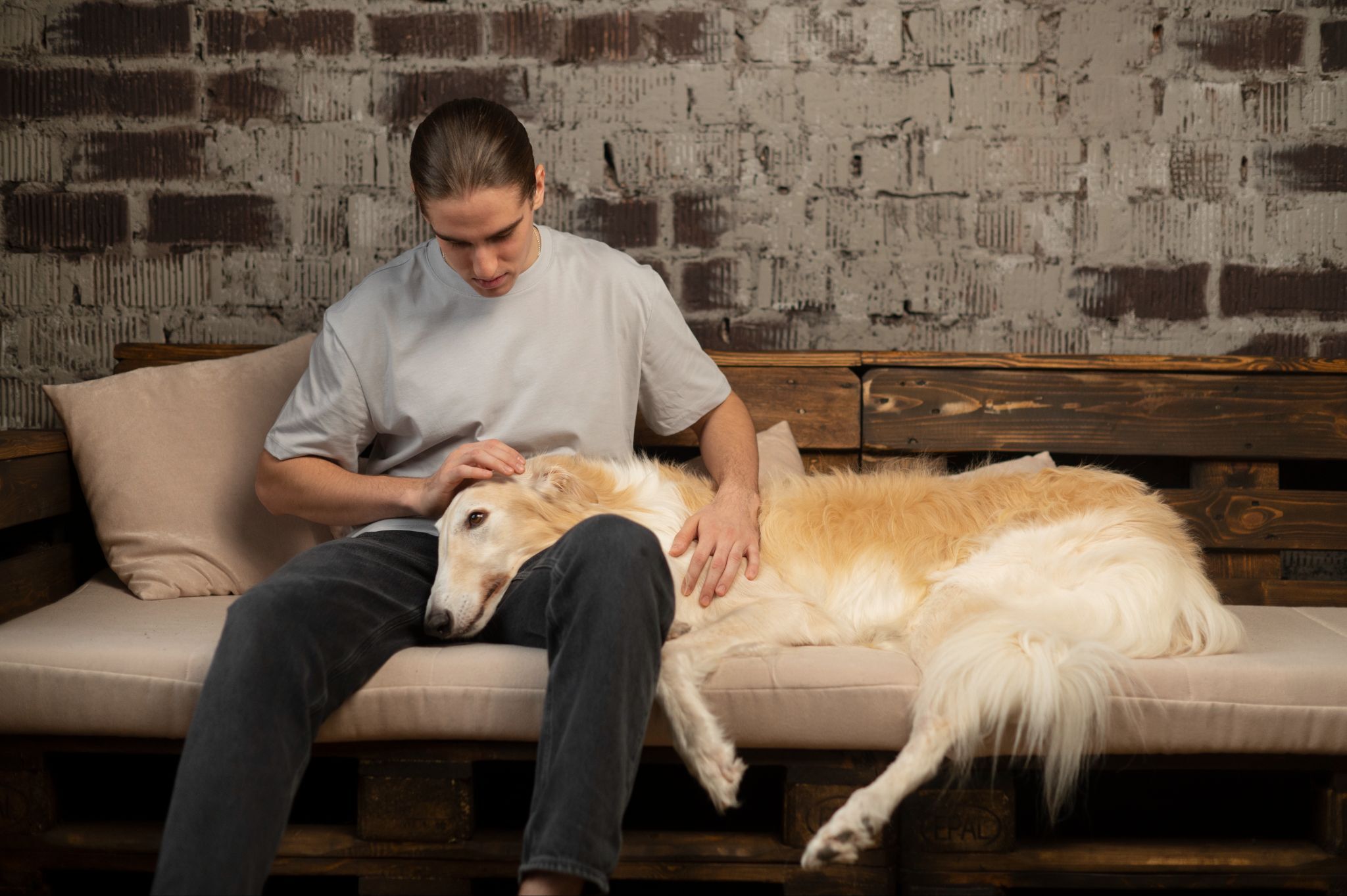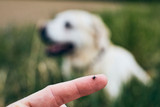How Long Are Dogs Pregnant - Tips for Care & Safety

Congratulations! If you’re reading this, your furry friend is likely expecting a litter of puppies. Dog pregnancy, also known as the gestation period, is a fascinating and sometimes challenging time for the dog and her owner. Understanding how long dogs are pregnant and the stages they go through can help you provide the best care and ensure a smooth pregnancy and delivery.
Understanding Dog Pregnancy: How Long Are Dogs Pregnant?
Dogs are pregnant for approximately 63 days, which is about 9 weeks. However, this can vary slightly, ranging from 56 to 72 days, depending on the individual dog and factors like the exact timing of conception. This gestation period is much shorter than human pregnancies, which typically last around 40 weeks. Despite the shorter duration, dog pregnancy is divided into distinct stages, each with signs and care requirements.
Why Is It Important to Know the Gestation Period?
Knowing how long dogs are pregnant is crucial for several reasons:
- Planning and Preparation: You can anticipate your dog's birth and prepare a safe space for her and the puppies.
- Monitoring Health: Understanding the timeline helps you recognize when something might be off, allowing you to seek veterinary care promptly.
- Proper Care: Different stages of pregnancy require tailored care, from nutrition to exercise.
How Do Dogs Get Pregnant?
Dogs can become pregnant during their heat cycle, typically occurring twice a year and lasting about three weeks. During this period, a female dog is fertile and can conceive if she mates with an intact male. When ovulation occurs, the fertile window is usually around the middle of the heat cycle. Spaying is recommended to prevent unwanted pregnancies if you’re not planning to breed your dog. If breeding is intentional, recording the mating date is essential to predict the due date, typically 63 days later.
Stages of Dog Pregnancy
Dog pregnancy can be broken down into five key stages, each with its own set of signs and care tips. Let’s explore them in detail:
Stage 1: Heat and Impregnation
- Duration: It occurs during the dog’s heat cycle, which typically happens twice a year and lasts about three weeks.
- Key Details: A dog can only become pregnant during its fertile window, usually around the middle of its heat cycle. If it mates with an intact male during this time, pregnancy is possible.
- Signs to Watch For:
- Behavioral changes: Your dog might become more affectionate or, conversely, more distant.
- Physical signs: You might notice a bloody vaginal discharge during her heat cycle.
- Care Tips:
- If you’re not planning to breed your dog, consider spaying her to prevent unwanted pregnancies.
- If breeding is intentional, record the mating date to help predict the due date (typically 63 days later).
- Ensure she doesn’t mate with other dogs, as she could become pregnant from multiple males during the same heat cycle.
Stage 2: First Month
- Duration: The first month after conception.
- Key Details: The fetuses are just beginning to form during this stage. Many dogs show no apparent signs of pregnancy, but some may exhibit subtle changes.
- Signs to Watch For:
- Slight weight gain
- Increased appetite
- Enlarged nipples (one of the earliest physical signs)
- Clear vaginal discharge
- Mild morning sickness (vomiting or nausea, though rare)
- Care Tips:
- Continue her diet and exercise routine, but avoid overfeeding or strenuous activities.
- Schedule a vet visit to confirm pregnancy. Your vet might use palpation (feeling for embryonic sacs) around weeks 3-4 or an ultrasound (best between days 25-35) to confirm.
- Monitor for any unusual symptoms, such as excessive vomiting, and consult your vet if concerned.
Stage 3: Second Month
- Duration: The second month of pregnancy.
- Key Details: This is when pregnancy becomes more noticeable. The fetuses start looking like puppies, and the mother’s body changes significantly.
- Signs to Watch For:
- Significant weight gain
- Enlarged abdomen (firm and round)
- Visible fetal movement (towards the end of this stage)
- Increased urination (due to pressure on the bladder)
- Behavioral changes, such as nesting (preparing a spot for the puppies)
- Care Tips:
- Confirm pregnancy with your vet if not already done. They can use ultrasound or X-rays (later in this stage) to check on the puppies’ development.
- Gradually increase her food intake to support the growing puppies, but avoid overfeeding to prevent obesity.
- Provide a comfortable, quiet space to rest, as she may tire more easily.
Stage 4: Final Days
- Duration: The last few days before labor.
- Key Details: This is the calm before the storm. Your dog will start showing signs that labor is near.
- Signs to Watch For:
- Restlessness (pacing, panting)
- Shivering or trembling
- Decreased appetite
- A drop in body temperature (a key sign that labor will start within 24 hours)
- Care Tips:
- Prepare a whelping box—a quiet, comfortable space where your dog can give birth and nurse her puppies. Line it with clean, soft bedding.
- Monitor her closely for signs of labor, but avoid stressing her.
- Ensure you have your vet’s contact information and a plan for emergencies.
Stage 5: Labor and Delivery
- Duration: Labor can last from a few hours to a day or more.
- Key Details: This is the most critical stage. Dogs typically deliver their puppies individually, with each puppy born within 30-60 minutes of the previous one.
- Signs of Labor:
- Contractions (you might see her abdomen tensing)
- Restless or reclusive behavior
- Excessive panting
- Vomiting or not eating
- Nesting behavior
- What to Expect:
- First Stage: Contractions begin, and the dog might seem uncomfortable or restless. This stage can last 6-12 hours.
- Second Stage: Puppies are delivered. Each puppy should be born within 30-60 minutes of the previous one. Contact your vet immediately if more than 2 hours pass without a puppy.
- Third Stage: The placenta is expelled after each puppy. Ensure each puppy has its placenta.
- Care Tips:
- Monitor the delivery closely. If you notice any complications (e.g., prolonged labor, green discharge, or excessive bleeding), seek veterinary help immediately.
- Have a plan in place for emergencies. Know your vet’s contact information and have a backup plan for after-hours care.
- After delivery, ensure the puppies are warm, dry, and nursing properly.

Tips for Care and Safety During Dog Pregnancy
Caring for a pregnant dog requires attention to her physical and emotional needs. Here are some essential tips to ensure a healthy pregnancy:
1. Nutrition
- Feed your dog a high-quality puppy food formulated for gestation and lactation. Look for food labeled “for all life stages” or specifically for pregnant and nursing dogs, as the American Kennel Club recommends.
- Gradually increase her food intake as the pregnancy progresses, especially in the second month when the puppies are growing rapidly. By the end of pregnancy, she may need up to 50% more food than usual.
- Ensure she has constant access to fresh water to stay hydrated, as dehydration can be a risk during pregnancy.
2. Exercise
- Continue regular, moderate exercise during the first two months, such as short walks, to keep her healthy and prevent obesity.
- As the pregnancy progresses, reduce the exercise intensity to prevent strain on her body. Avoid activities like jumping or running.
- Always monitor her for fatigue or discomfort and adjust her activity level accordingly.
3. Veterinary Care
- Schedule regular check-ups with your vet to monitor the pregnancy and ensure the health of the mother and puppies. Your vet can perform tests like ultrasounds or X-rays to assess the puppies’ development.
- Discuss any concerns with your vet, such as diet, exercise, or unusual symptoms.
- Be prepared for emergencies. Have your vet’s contact information handy, especially as the due date approaches, and know where to go for after-hours care.
4. Comfort and Environment
- Provide a quiet, comfortable space for your dog to rest. As delivery approaches, set up a whelping box in a quiet area of your home, free from drafts and disturbances.
- Line the whelping box with clean, soft bedding, such as blankets or towels, and ensure it’s easy to clean.
- Keep the area warm, as pregnant dogs and newborn puppies are sensitive to cold temperatures.
5. Emotional Support
- Due to hormonal changes, pregnant dogs can experience mood swings. Some may become more affectionate, while others might be more protective or anxious.
- Spend time with her to provide reassurance, but respect her need for space if she seems withdrawn.
- Avoid introducing significant changes to her routine, as stability is important during pregnancy.
Product Recommendations for Safety
At dogIDs, we understand the importance of keeping your dog safe, especially during pregnancy. Here are some products that can help:
Dog ID Tags
- Why They’re Important: Pregnant dogs may experience behavioral changes, such as becoming more protective or anxious, which could lead to wandering. An ID tag ensures she can be easily identified and returned home if lost.
- How to Use Them: Choose a durable, well-fitted collar with an ID tag that includes your contact information. As your dog’s belly grows, ensure the collar is comfortable and not too tight. Explore our range of dog ID tags for customizable options that suit your dog’s style and needs.
Reflective Dog Collars
- Why They’re Important: Due to increased urination, pregnant dogs may need more frequent bathroom breaks, especially at night. A reflective collar makes her more visible during nighttime walks, enhancing safety by ensuring drivers and pedestrians see her.
- How to Use Them: Pair a reflective collar with a leash for nighttime outings. The reflective material is designed to catch light, making your dog stand out in low-visibility conditions. Check out our reflective dog collars for durable, stylish options.
These products provide safety and add a touch of style to your dog’s accessories, ensuring she’s both protected and looking her best during pregnancy.
Interesting Facts About Dog Pregnancy
To make this guide even more engaging, here are some fascinating facts about dog pregnancy:
- Puppies Are Born Deaf and Blind: Dogs have a shorter gestation period than humans, which doesn’t allow enough time for puppies to develop sight and hearing in the womb. This is why puppies are born with their eyes and ears closed, opening them around 10-14 days after birth.
- Average Litter Size: While litter sizes vary greatly depending on the breed, the average is about 5-6 puppies. Smaller breeds may have 1-4 puppies, while larger breeds can have 10 or more.
- Morning Sickness in Dogs: Just like humans, some dogs can experience mild morning sickness during early pregnancy, typically in the first month. This is usually mild and resolves independently, but consult your vet if it persists.
- False Pregnancies: Dogs can exhibit signs of pregnancy, such as nesting or producing milk, without actually being pregnant. This is known as a false pregnancy or pseudocyesis and is caused by hormonal changes after a heat cycle, as explained by PetMD.
- Higher Fertility in Domestic Dogs: Due to selective breeding, domestic dogs have higher fertility rates and larger litter sizes than their wild ancestors, ensuring their survival.
Preparing for the Puppies
As your dog’s due date approaches, it’s essential to prepare for the arrival of the puppies:
- Whelping Box: Set up a quiet, comfortable space with clean bedding where your dog can give birth and nurse her puppies. The box should be large enough for her to move around, but cozy enough to keep the puppies contained.
- Veterinary Support: Plan for veterinary assistance during delivery, especially if complications arise. Know your vet’s emergency contact information and the location of the nearest 24-hour veterinary clinic.
- Puppy Care: Once the puppies are born, ensure they are warm, dry, and nursing properly. Monitor their weight gain and health, and consult your vet for guidance on caring for newborns.
- Identification: Consider getting ID tags for the puppies as they grow, especially if you plan to rehome them. Proper identification is crucial for their safety, and dogIDs offers a variety of dog ID tags suitable for puppies.
Potential Complications to Watch For
While most dog pregnancies proceed smoothly, it’s essential to be aware of potential complications:
- Prolonged Labor: If your dog is in labor for more than 24 hours without delivering a puppy, or if more than 2 hours pass between puppies, seek veterinary help immediately.
- Pre-eclampsia: A condition caused by low calcium levels, which can lead to tremors, weakness, or seizures. This is more common in small breeds or dogs with large litters, as noted by VCA Animal Hospitals.
- False Pregnancy: If your dog shows signs of pregnancy but isn’t pregnant, consult your vet to rule out other health issues.
- Infections or Discharge: Green or foul-smelling discharge during pregnancy or labor is a sign of infection and requires immediate veterinary attention.
Understanding the stages of dog pregnancy and how to care for your dog during this time is crucial for a healthy outcome. By providing proper nutrition, regular veterinary care, and a safe environment, you can help ensure your dog has a smooth pregnancy and delivery. Don’t forget to equip her with essential safety gear like ID tags and reflective dog collars from dogIDs to keep her protected throughout this journey.
Explore Popular Articles
-
The Ultimate Training Tool: Why Your Dog Needs a Martingale Leash
Oct 30, 2025Frustrated by walks that feel more like a tug-of-war than a relaxing stroll? If you have a dog who c
-
Homemade Flea, Tick & Mosquito Repellent for Dogs: A Natural Recipe for Pet Parents
Jun 13, 2025Beyond the Buzz and Itch: Protecting Your Pup from Mosquitoes, Fleas, and Ticks As pet parents, we w
-
Can My Dog Eat This? A List of Human Foods Dogs Can and Can't Eat
Jun 04, 2025As loving dog owners, we consider our furry companions members of the family. They share our homes,




